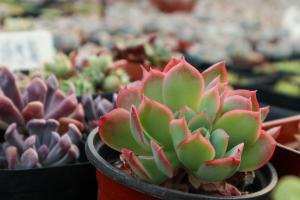Temperature management
Generally speaking, if the outdoor temperature drops to 2-3 ℃, the orchids should be moved indoors for maintenance. It should be noted that the timing of moving indoors should be grasped. If Jianlan is moved indoors too early, it will affect the growth and development of Jianlan, greatly reduce the germination of Jianlan, or even no flower buds, and the number of flowers in the coming year will be much lower than before. If you enter the room too late or the indoor temperature is too low, it is easy to cause frostbite or even freezing death of Jianlan. The temperature should not be below zero. Pay attention to keep warm. Note that before moving Jianlan indoors, it is necessary to remove insects and sterilize, so as to eliminate insect eggs in advance to prevent Jianlan from being damaged by insects the next year

Water management
Winter is the dormancy period of Jianlan. The absorption performance of plant roots decreases greatly, and the growth slows down or stops growing. Jianlan doesn't need much water in winter. At this time, the watering amount should be controlled, but the watering can't be stopped. You can often spray water or water appropriately according to the situation to keep the basin soil moist. In winter, we should pay special attention to prevent the mildew of the root system. When the weather is sunny and warm, we can move it outdoors to bask in the sun. It should be noted that Jianlan cannot be placed in a room with large temperature difference, and large temperature fluctuation is not conducive to plant growth

Light management
Jianlan likes light, but can't accept direct sunlight for a long time. It's best to put it in a place with sufficient scattered light for breeding. When the sun is strong, pay attention to appropriate shading treatment. If the temperature in winter is lower than 10 ℃, it can properly accept full-time sunlight, which is conducive to the birth of new buds, improve the resistance of plants and reduce the occurrence of diseases

Ventilation
When Jianlan is cultured indoors in winter, pay attention to the air circulation and keep the indoor ventilation. When the weather is sunny and the temperature is relatively high during the day, open the window in time to vent the turbid air in the room. In addition, orchids cannot be cultured near the air conditioner. The roots of Jianlan are relatively strong. Therefore, in winter, in addition to maintaining indoor air circulation, we should also pay attention to ensuring the air permeability of the soil

 how many times do yo...
how many times do yo... how many planted tre...
how many planted tre... how many pine trees ...
how many pine trees ... how many pecan trees...
how many pecan trees... how many plants comp...
how many plants comp... how many plants can ...
how many plants can ... how many plants and ...
how many plants and ... how many pepper plan...
how many pepper plan...































